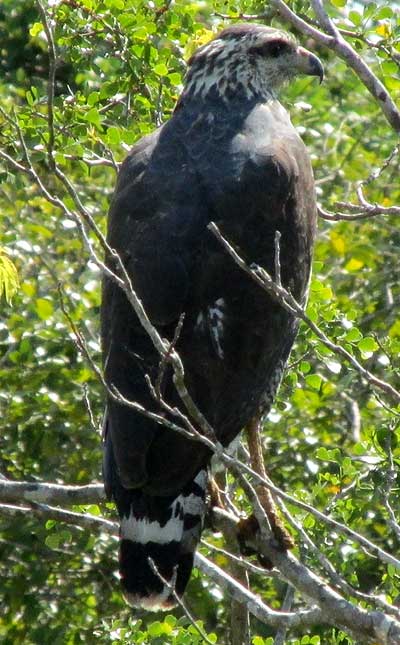Excerpts from Jim Conrad's
Naturalist Newsletter

from the February 22, 2015 Newsletter issued from Río Lagartos, on the Yucatan Peninsula's northern coast (~N21.60°, ~W88.16°), Yucatán state, MÉXICO
GREAT BLACK HAWK
Here along the Yucatan coast we have both the Common Black Hawk and the Great Black Hawk. The Great Black Hawk doesn't show up in the interior, though the Common does. The two species are very similar. The Great Black is larger -- its "length" being given as 22in (56cm) compared to the Common's 19.5in (50cm) -- but that's hard to judge in the field, and other differences can be hard to see, too. Distinguishing the two can be a challenge, at least from a distance.
Both black hawk species are black, but their juvenile plumages are brown and white. This week I got a good look at an immature Great Black, whose picture is shown above, to help with future identification challenges There we can see that the legs bear several slender, horizontal bars. Legs on the Common Black immature bear only three or so thicker bars. Another shot appears below:

The practiced eye notices the tail length, which is longer than the Common Black's. The bird in our pictures must be transitioning from its juvenile plumage to adult, for normally the immature's tail bears many horizontal dark bands on a tan background. This bird's tail with only one broad white band on a blackish background is more typical of the mature bird's.